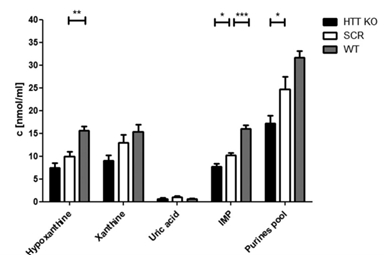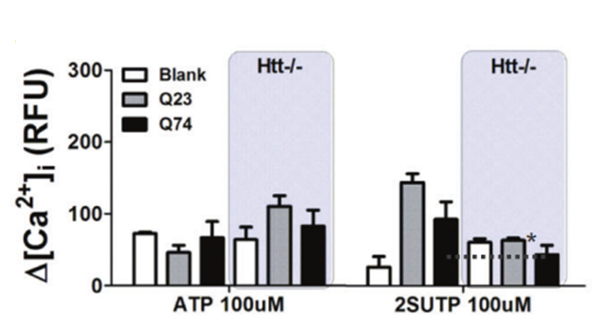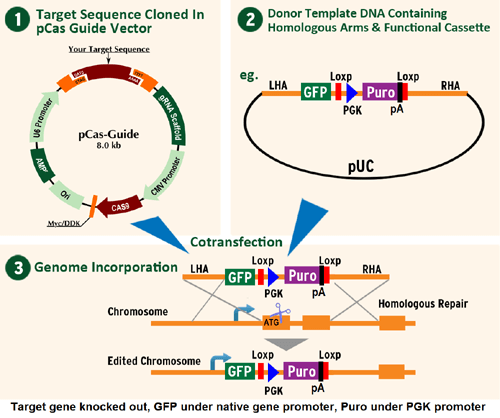Huntingtin (HTT) - Untangling Neurodegeneration

Huntingtin is a gene linked to Huntington's disease, a neurodegenerative disorder characterized by loss of striatal neurons. However, the mechanisms by which mutant huntingtin leads to neurodegeneration in Huntington's disease (HD) are still not fully understood. Studying the normal functions of huntingtin is crucial, as loss-of-function phenotypes resulting from the polyglutamine expansion may contribute to the underlying pathophysiology. Further research in this area is essential to understand the roles of this crucial protein and identify potential therapeutic targets.
Other disease associations: Breast Cancer
OriGene offers a range of tools for analyzing HTT
Featured Products:
Human Recombinant Protein |
NEW Rabbit Monoclonal Antibody |
Mouse Gene Knockout CRISPR Kit |
|
|
|
|
| Difficult to express and purify full-length Human HTT protein expressed in HEK293 cells | Rabbit monoclonal [HSD17B13] Antibody, Clone OTIR4A12 for WB, IHC applications | HDR-mediated mouse HTT gene knockout kit via CRISPR |
|
|
|
|
Application in Research:
OriGene's products are crucial in HTT-related research, as demonstrated by their frequent citations in well-reputed journals. Marta T. et al. used the mouse HTT gene knockout kit () to differentiate mice cardiomyocytes from HTT null mouse embryonic stem cells (ESC) and WT ESC (Figure 1)1. Glaser T. et al. used the mouse HTT gene knockout kit () to transfect the E14Tg2A cell (Figure 2)2.


References
- Marta T. et al. Nucleosides Nucleotides Nucleic Acids (2022). doi: 10.1080/15257770.2020.1815769
- Glaser T. et al. Mol Psychiatry (2021). doi: 10.1038/s41380-020-0717-5

![Coomassie blue staining of purified HTT protein (Cat# TP318435). The protein was produced from HEK293T cells transfected with HTT cDNA clone (Cat# [RC218435]) using MegaTran 2.0 (Cat# [TT210002]).](https://cdn.origene.com/catalog/product/assets/images/proteins/tp318435.jpg)
![Immunohistochemical staining of paraffin-embedded stomach cancer using anti-HTT C/N TA591055 clone OTI4A12 rabbit monclonal antibody. HIER ACCEL buffer pH9 ([B22-125]) at 110C for 10 min, anti-HTT diluted to 1:100. Detection was done with Polink1 Rabbit C/N [D13-18] with DAB Kit. Image 40x magnification.](https://cdn.origene.com/catalog/product/assets/images/antibody/primary-antibody/100/ta591055-101-h.jpg)
![Immunohistochemical staining of paraffin-embedded liver cancer using anti-HTT C/N TA591055 clone OTI4A12 rabbit monclonal antibody. HIER ACCEL buffer pH9 ([B22-125]) at 110C for 10 min, anti-HTT diluted to 1:100. Detection was done with Polink1 Rabbit C/N [D13-18] with DAB Kit. Image 40x magnification.](https://cdn.origene.com/catalog/product/assets/images/antibody/primary-antibody/100/ta591055-102-h.jpg)
![Immunohistochemical staining of paraffin-embedded colon cancer using anti-HTT C/N TA591055 clone OTI4A12 rabbit monclonal antibody. HIER ACCEL buffer pH9 ([B22-125]) at 110C for 10 min, anti-HTT diluted to 1:100. Detection was done with Polink1 Rabbit C/N [D13-18] with DAB Kit. Image 40x magnification.](https://cdn.origene.com/catalog/product/assets/images/antibody/primary-antibody/100/ta591055-103-h.jpg)
![Immunohistochemical staining of paraffin-embedded breast cancer using anti-HTT C/N TA591055 clone OTI4A12 rabbit monclonal antibody. HIER ACCEL buffer pH9 ([B22-125]) at 110C for 10 min, anti-HTT diluted to 1:100. Detection was done with Polink1 Rabbit C/N [D13-18] with DAB Kit. Image 40x magnification.](https://cdn.origene.com/catalog/product/assets/images/antibody/primary-antibody/100/ta591055-104-h.jpg)
![HEK293T cells were transfected with the pCMV6-ENTRY control (lane 1, 5ug) or HTT protein ([TP318435], lane 2, 5ug) . SDS-PAGE and immunoblotted with anti-HTT (TA591055, 1:500).](https://cdn.origene.com/catalog/product/assets/images/antibody/primary-antibody/100/ta591055-101-w.jpg)

